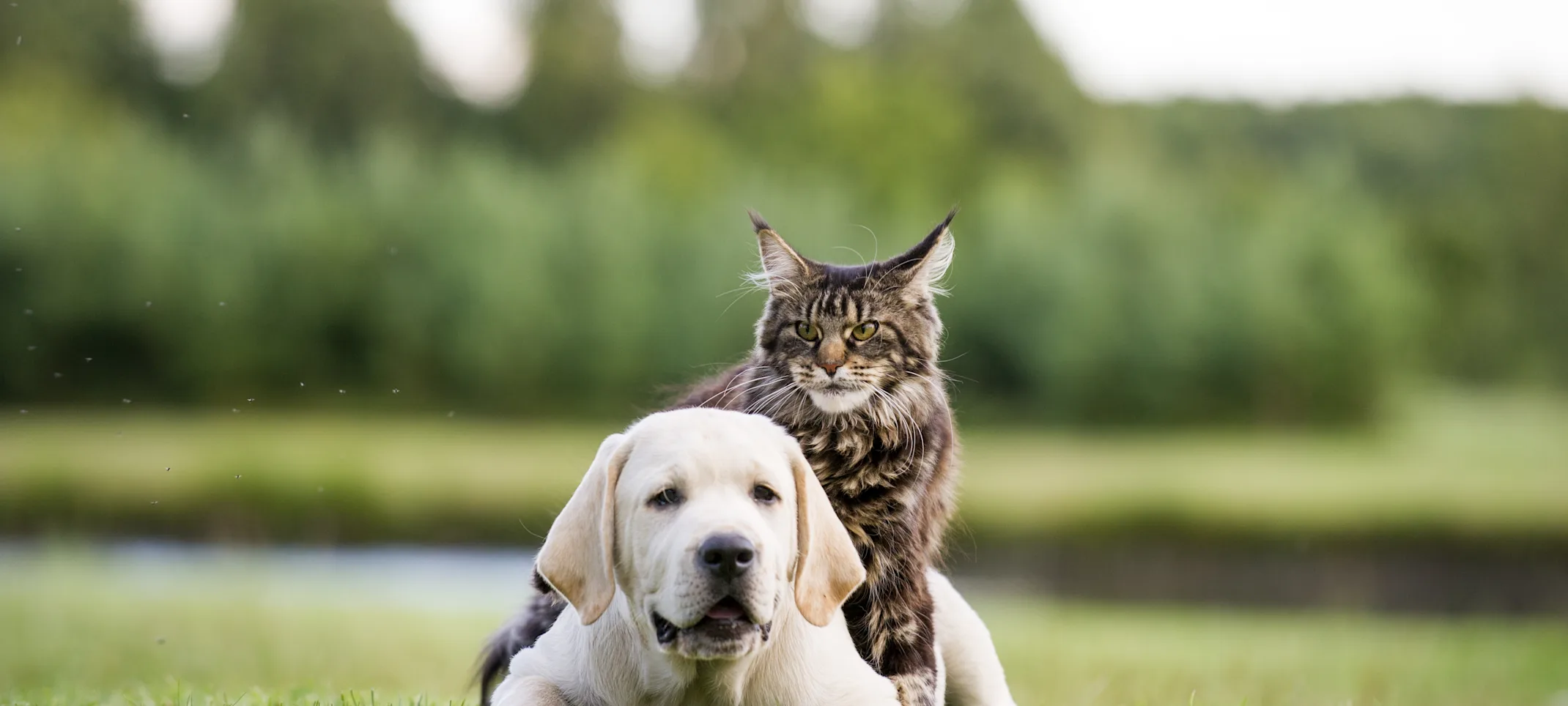Clark Animal Care Center
Nutrition

Feeding Puppies and Kittens
One of the most frequently asked questions when a family gets a new puppy or kitten is “what should we feed it?”.
Puppies
Clark Animal Care recommends feeding puppies a total of 1 cup of a good quality puppy food per 10 pounds of the puppy’s body weight divided into three meals a day. For large breed puppies, those that will be over 50 pounds as adults, we recommend feeding specialized puppy food for “large breeds”. These food have less calcium and calories to help large breed dogs grow more slowly and evenly to minimize joint problems.
Kittens
We recommend that kittens are fed a variety of canned and dry foods from the start. This can help prevent them from developing food preferences. Canned food is especially important because it contains higher amounts of protein (compared to dry food) which is needed for growth. Cats evolved eating small rodents which are comprised of mainly protein and fat. The average mouse consists of only about 3% carbohydrate. Dry food contains a huge amount of carbohydrate (usually over 50% carbohydrate). Ingesting all this carbohydrate can lead to obesity, diabetes, and intestinal disease. Protein (not carbohydrate) shuts off your cat’s appetite center. If a diet has insufficient protein your cat will always feel hungry and constantly clamor for more food. Additionally, because canned food contains a lot of water, it may help prevent urinary tract diseases in cats. Provide mostly canned food, but also offer a small amount of dry food (especially dental dry foods to adult cats).
For Both Puppies and Kittens
Once your pet is spayed or neutered, their caloric requirements will decrease by 25%. This is the time to decrease the calories your pet consumes! It is much harder to change their feeding habits 6 months later, when they are overweight.
57.6% of cats and 52.6% of dogs are obese. To learn more about pet obesity prevention, click here.
How To Get a Bird to Eat
The most common cause of illness in pet birds is poor nutrition. Many birds refuse to eat anything but seeds, but an all seed diet is inadequate to maintain any bird in good health. So the two questions that need to be answered are what should you feed your bird and how are you going to get it to eat the food?
In the wild, birds eat a wide variety of foods and learn to try various foods by mimicking other members of the flock. Wild birds often forage in the early morning and in the evening. They are more motivated than captive birds by hunger and will eat items that might not be favorites. Unfortunately, it is very difficult to duplicate flock foraging activity. However, offering limited amounts of food in the morning and evening may at least approximate the normal feeding habits of birds. Breakfast Without Seeds
One way to convert a seed-eating bird to a better diet is to take advantage of its wild instincts. An established seed-eating parrot should have no food left in the cage overnight. In the morning place fruit, vegetables, table food, formulated diets (extruded or pelleted “complete” rations) and/or specialty items such as LaFeber’s Nutriberries (which contain hulled seeds coated with a nutritious supplement) in the cage. Watch the bowls and floor of the cage for signs of eating. Look for tossed-out items, sampled items, and those items that have been truly eaten. If the bird is eating the new food its droppings will change to a lighter color and will be larger. If the parrot is not eating by noon, place a small amount of seed in the cage. Offer seed later and later each day as the bird improves its eating habits. Ultimately, seed will not be left in the cage and will only by given from your hand as a treat. Taking out all food every evening makes the bird very motivated to eat in the morning.
Established seed-eating parakeets and cockatiels are converted in the same way. Alfalfa sprouts, spinach, chopped eggs, and cheerios are some of the items that can be offered each morning before seed is given. In addition, try several types of extra-small formulated diets (Roudybush crumble for seed-eating birds or Purina mini-friends are examples that look like seeds). Parakeets are particularly difficult to convert, but will still benefit from having to eat other foods each morning.
To prevent boredom between feedings provide a variety of toys and objects to destroy. Psittacine birds are naturally driven to seek out, husk, shell, destroy, strip bark and leaves and so on. Providing objects in the cage to destroy (such as clean apple, alder, willow, birch, oak, or commercially available soft-wood toys) will serve as an outlet for these instincts. The end result of making these changes should result in a happier, healthier avian companion.
